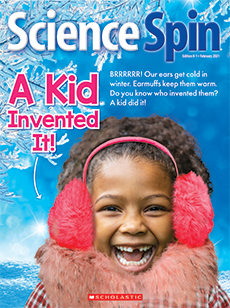November 2024
Turkeys in Town!
Academic Standards
Reading Objective:
Students will recognize that wild turkeys have moved to town because urban and suburban habitats can offer them what they need to survive.
Next Generation Science Standards:
K-ESS3-1: The relationship between animals and plants and where they live
1-LS1: The survival needs of plants and animals
Vocabulary:
bird feeder, roost, poults, strut
Use your Science Spin to find the best answer to each question.
1. What kind of food do turkeys in towns eat?
(seeds)
2. What is a roost?
(a high spot to rest)
3. What are turkey babies called?
(poults)
4. Draw a picture of a turkey in your town!
Go online to print or project the Reading Checkpoint.
- Long ago, people cut down so many trees to make farms that turkeys nearly went extinct—they needed their roosts to survive!
- How can you tell if a turkey is male or female? The males’ poop is shaped like a J. The females’ looks like a spiral. Also: Older turkeys make bigger poop.
Materials: pencils, markets, copies of the skill sheet.
Overview: Kids design a backyard roost for a turkey that will let it rest comfortably and keep it safe from predators.
Directions:
- Remind students that turkeys need a roost. That’s a high spot to rest and stay safe from predators like coyotes and wolves below. In towns, turkeys can roost in trees or on a playhouse.
- Can your students be engineers who design a fantastic turkey roost for a backyard? Review with them what the roost will need—height, a spot to rest, etc.
- Pass out the skill sheets, pencils, and markers
- Kids design their own roost. But they can work in groups to brainstorm and collaborate.
- How high should the roost be to keep turkeys safe from predators?
- How will the roost let the turkey rest comfortably?
- Draw the roost on the skill sheet. Suggest they add labels if they’re able. If there’s time, have a gallery walk to admire the different roost designs.
